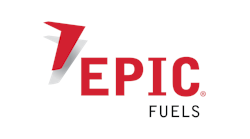The aviation industry has raised the bar in regards to safe aircraft fueling operations. As a comparison, the typical automobile safety equipment found in cars made today such as anti-lock braking systems, crumple zones, air bags, rollover protection, and stability control are far advanced from cars made in the ‘50s and ‘60s when seat belts alone were the new industry standard. In those “old days” FBOs took “line boys” from washing planes in exchange for a free airplane ride to fueling planes, all without following a formally written training program. Much like the automotive industry, aircraft fueling operations have become increasingly centered on safety.
Aviation fueling industry safety procedures and equipment that are considered “standard” today represent an evolution of past standards. It’s important to point out that the judicial system considers industry “standards” as having almost the power of law. Many times fixed base operators aren’t aware that they are operating outside the standard.
Therefore, the concern is that if an FBO intentionally or unintentionally operates outside industry standards, defense of their actions would be difficult in court.
The use of the J-Spout, a primary misfueling prevention device, is an example of an industry standard. Yet many line service personnel, including supervisors and managers, have not yet fitted their jet fuel overwing nozzles with these spouts because the J-Spout is not compatible when fueling some helicopters. The lack of proper management and oversight when using the round jet fuel nozzle or “rogue” nozzle can, and has led to, the misfueling of an aircraft.
The industry standard for aircraft misfueling was published in December 2006 by the American Petroleum Institute (API): API/IP Recommended Practice 1597 – Procedures for overwing fuelling to ensure the correct grade to an aircraft. It details all the standard misfueling prevention procedures such as fuel grade confirmation, aircraft wing decals, fuel order forms, selective nozzle spouts, and misfueling prevention training. (Air BP Aviation Services has recently developed a web-based training program which follows this new industry standard for misfueling prevention.)
Heart of the issue: Training
Insufficient training and/or untrained people working unsupervised was a root cause in 90 percent of the incidents we have tracked for the past six years.
There is an industry standard for training line service personnel as well — it is widely considered to be the NATA Safety 1st program or an equivalent line service training program. However, to qualify to be “certified” under the Safety 1st program, a student must complete the entire curriculum. In many cases we find FBOs displaying Safety 1st logos, yet an audit of their training records reveals only a fraction of the program was completed.
The entire NATA Safety 1st program includes a preview, review, hands-on training, and documentation, much more than just watching some videos and taking a test. NATA is now moving the Safety 1st program to a web-based format.
Whatever approved training program is used must provide documentation that the employee is proficient enough to be allowed to service aircraft on their own. In the wake of a serious incident, the first thing an investigator from the FAA, NTSB, police, fire, or insurance company will ask for is the training records for the people involved. FAA likes to ask: “Who trained the individual?” When you answer, the agency will challenge you to provide documentation that they were qualified to conduct the training.
Airline, Military Standards
The bar has also been raised for fixed base operators that fuel airlines and government aircraft. Most airlines and the Defense Energy Supply Center (DESC), which administers military/government fuel contracts, require into-plane contract locations to follow the ATA 103 Standard for Jet Fuel Quality Control at Airports. This standard now requires that into-plane agents have their own site-specific Airport Fuel Facility Operations and Maintenance Manual. This requirement is detailed in the following text taken from the www.air-transport.org website:
“Among the provisions in ATA Specification 103 is a statement that airport fueling vendors with administrative and operational responsibilities should have operation and maintenance manuals identifying the practices and procedures they use to help ensure the safe and dependable flow of quality, on-specification fuel to aircraft. This document, the ATA Airport Fuel Facility Operations & Maintenance (O&M) Guidance Manual, is intended to provide guidance on the preparation and content of such a manual.”
“Accordingly, it identifies operating procedures as they pertain to fueling methods, storage, receipt, and transfer to help ensure the safe and dependable flow of quality, on-specification fuel to aircraft and to facilitate good management practices and consideration of environmental requirements related to these activities and practices that promote environmental protection.”
This Air Transport Association Guidance Manual is included with a purchase of the ATA 103 specification and is intended to serve as a practical reference for aviation fuel facilities to use in preparing their own site-specific Operations and Maintenance Manuals.
A site-specific O&M Manual should include many specifics on the particular site and local requirements; but, where relevant, may also include language taken directly out of this Guidance Manual. The objective of this document is to serve as a template for an O&M plan for any facility that needs written procedures for its fuel facility operations. It is not intended to demonstrate compliance or non-compliance with any regulations.
The most important point: Airport fuel providers should know, own, train to, and operate by their own “customized” manual that describes their own facility in detail. Merely handing an inspector the fuel provider’s quality control manual will not come close to meeting this requirement.
Not having this manual places the fuel provider in violation with the airline and the DESC, as some aviation fuel providers have discovered after a DESC inspection. Having one in place will help locations clear this new bar.
New Standards Coming?
As with automotive safety standards, technology has advanced in the aviation fueling business. Some of these may become industry standards in the near future. These may include intelligent additive injectors that monitor FSII additive injection rates; safety hand rails on the top of refuelers to meet OSHA requirements for working at height; secondary high level shutoff system for refuelers; reclaim tanks for the recovery and recycling of fuel drawn for QC testing; and line service training offered in an Online web-based format that monitors access, improves presentation, and automatically documents the progress and performance of the student.
SMS
Safety Management Systems (SMS) are quickly being identified as the next industry standard to be widely adopted. Even FAA intends to implement the use of SMS at U.S. airports to meet the intent of the ICAO standard in a way that complements existing airport safety regulations in 14 CFR Part 139, Certification of Airports.
The benefits of an SMS are described by NATA, which offers a system specifically suited to ground service and fuel providers:
“NATA’s SMS takes the guesswork out of operating safely and goes well beyond preventing accidents by helping establish a strong safety culture at companies. If a company operates, handles, or services aircraft, the SMS will absolutely improve their bottom-line performance. Simply put, by eliminating accidents, incidents, and injuries, companies will be able to redirect those dollars back to their business. SMS will also enhance reputations as customers see a more professional organization.
I am a big fan of the SMS process and feel this could be the perfect catalyst to take safety performance to the next level in our industry. These are well-proven systems that have been around for some time. In my opinion, those organizations that successfully adopted a SMS did so because they established a proactive safety culture across the whole organization.
In every case I have seen, the key to their success was that the effort was led from the very top of the management team. It’s critical to identify and proactively manage all the risks in the business. Risk management is not the responsibility of one person or even a department. It is everyone’s responsibility and begins from the top down with committed, visible leadership.
* * *
We always suggest companies perform periodic audits for compliance with industry standards such as API 1597 for misfueling prevention, the fire code NFPA 407, the airline quality control standard ATA 103, and the fuel suppliers operating standards. The next step would be to prepare a gap analysis to determine if the operation meets or exceeds industry standards; and, if an operation falls below the standard, prepare an action plan to correct.






